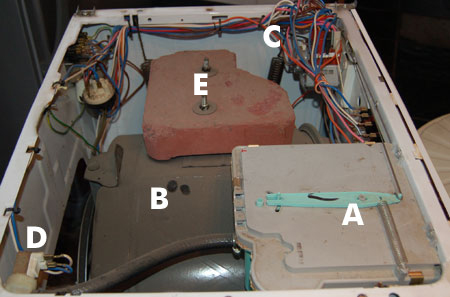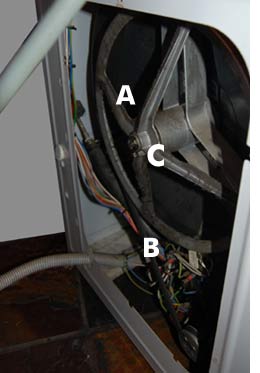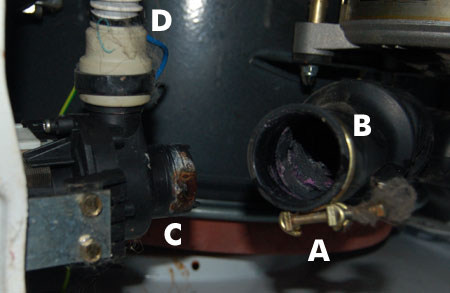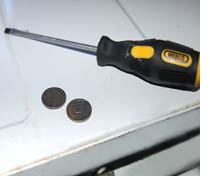How to repair a front loader washing machine
My washing machine recently started making a loud knocking noise. It's not a new machine but it's also not that old that I want to rush out and buy a new one. Having previously repaired a washing machine I decided to see what I could do before taking any drastic steps to call someone in...
The first step was to try and position the noise. If you know the area where the noise is coming from it's logical to start looking for a problem in that spot. It was a case of fill up the machine and let it run while I stood by and waited for the noise to occur. It helps to think about what is actually happening in the machine at the time of any fault. For example: my noise definitely occured as the pump came on to empty water.
Pull out and open up the machine
Switch off the power. Pull out the machine - grab the inside top of the door seal and drum - and slowly pull forward. A bit of side-to-side wiggling also helps to pull it out of a tight spot.
Most washing machines allow for the top and back panel to be removed. Use a suitable screwdriver to remove any screws. Don't use a screwdriver that is too small or you will end up stripping the head of the screw!
Top section
Once you have removed the top panel you will see a standard arrangement of parts: (A) Dispenser, (B) Drum, (C) Controls, (D) Thermostat, (E) Tub Weight.
If your washing machine is making a loud knocking noise, it could be a loose tub weight (E). The noise would be worse when washing a heavy load. You can also check for dust under the washing machine.
Back section
(A) Drum, (B) Belt, (C) Bearing
Drum bearing failure is the most common fault on many washing machines.
To test for this you can take off the belt (B) and spin the drum by hand. If the drum rumbles as you turn it then the bearings may have gone.
A badly worn belt can also cause a loud noise - similar to when a fan belt breaks on a car. This is easily replaced simply by removing the old belt and using a screwdriver to ease the new belt on.
You can buy spares for most makes and models of washing machines. Search online for repairs to your make and model.
Bottom section
(A) Circlip, (B) Water Outlet Pipe, (C) Water Pump Inlet, (D) Water Pipe to drain
You can gain access to parts at the bottom of the machine by laying it on its side, but never turn it upside down. If the washing machine still has water inside it needs draining out or water can run inside and short out components.
By loosening the circlip (A) and removing outlet pipe (B) you can drain water still in the machine into a bucket.
Once removed, you can check both outlet (B) and inlet (C) pipes for blockages.
Going back to my noisy washing machine. I located the fault to the water pump, loosened the circlip (A), pulled of pipe (B) - making sure that there was a bucket handy to catch any water still in the machine. On the left you will see the culprits - two R1 coins that must have fallen through the door seal and were lodged in the opening of the water pump inlet (C).
Just saved myself a few hundred rands on repairs!
SAFETY FIRST: Unplug the washing machine before attempting any repairs whatsoever. NOTE that some later model washing machines can still electrocute - even when unplugged.




